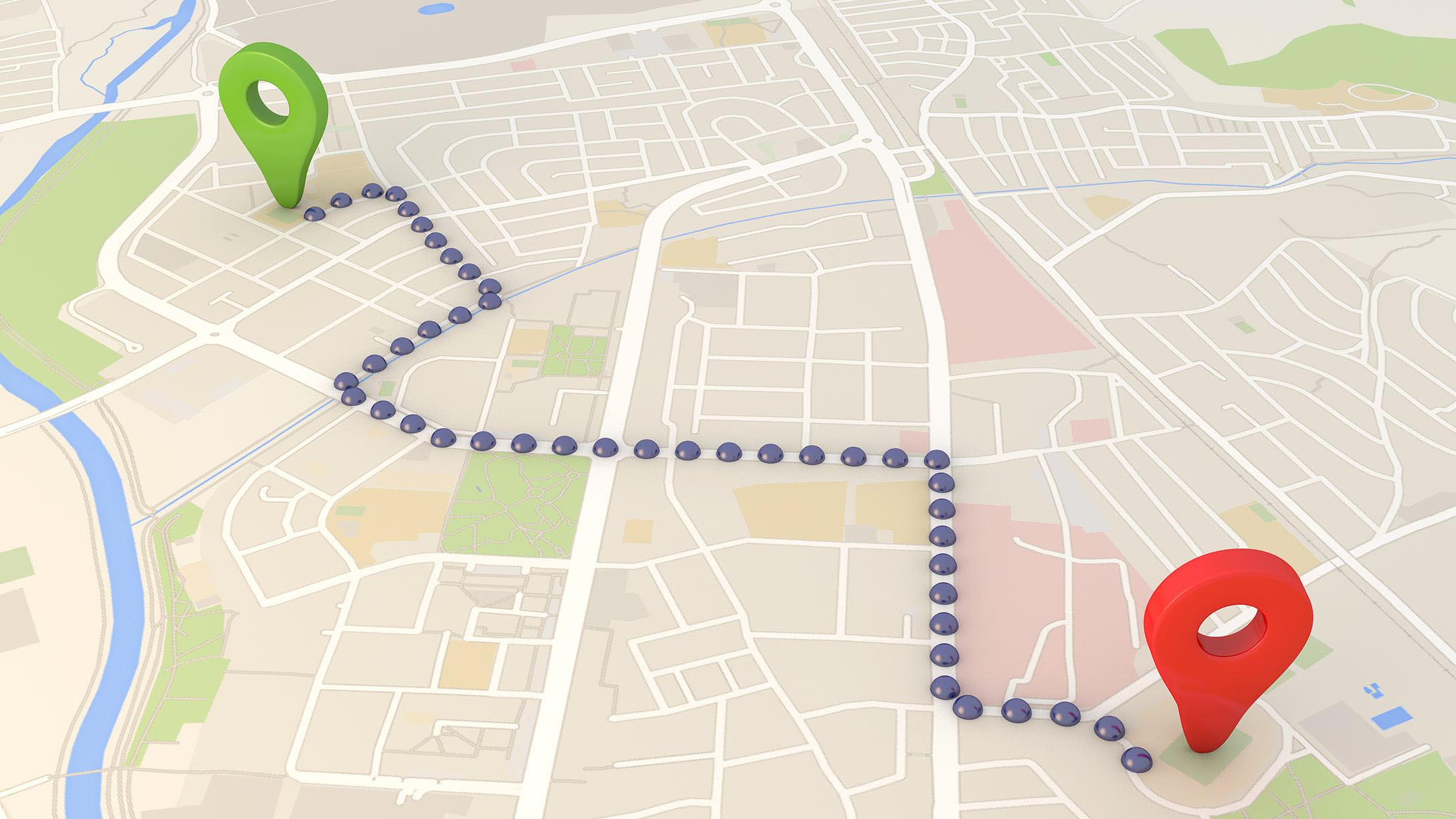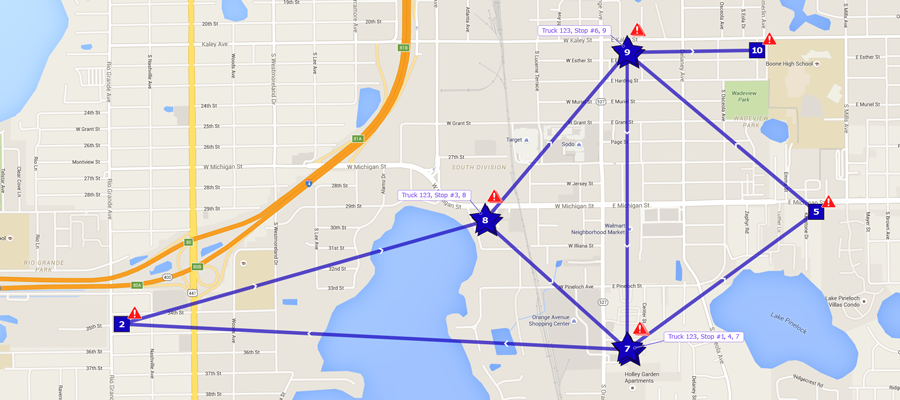What are GPS jammers and how do you combat them?
Learn more about GPS jammers, how they work and what Geotab does to detect threats.

These days, having movements tracked — online and in the real world — is becoming more common. For business especially, there is a long list of GPS tracking benefits. While many people are willing to share their location for good purposes, there are others who are not.
What is a GPS jammer?
A GPS jammer is a typically small, self-contained, transmitter device used to conceal one’s location by sending radio signals with the same frequency as a GPS device. When this occurs, the GPS device is unable to determine its position due to interference.
The relatively low power and quick start up time allow the jammers to be used only when required. Although illegal, various types of cheap GPS jammers are available for purchase online, such as physical shields, Wi-Fi/Bluetooth jammers, remote control jammers, spy camera jammers and drone jammers, just to name a few.
How a GPS jammer works:
- The user plugs the jammer into the automotive auxiliary power outlet.
- The unit is placed close to the installed GPS tracker.
- When active, the GPS jammer generates an interference signal over a 5 to 10 meter radius to disrupt reception of the GPS satellite signal.
To understand how a jammer functions, it is also helpful to know how the global positioning system (GPS) works.
A GPS tracker receives microwave signals from an array of satellite transmitters orbiting the Earth. Once the tracker receives signals from four or more satellites, it determines its position through a series of time calculations and trilateration. The receiver relies on these precise and specific satellite signals to determine where it is in the world. The GPS tracking device then transmits this position and velocity information to a monitoring location, usually, sent over the cellular network.
In some cases, satellite malfunction or solar flares can temporarily disrupt the transmission of GPS signals. A GPS jammer is different though in that it sends out radio signals or signal noise with the same frequency as the GPS device, to override or distort the GPS satellite signals. When this occurs, the GPS device can then no longer calculate its position because the satellite signal is masked by the interference.

GPS satellite broadcasting signals.
Who uses GPS jammers?
The reasons for using jammers are varied. Originally created by the government, GPS jammers were designed for military use. Concealing vehicle location can be crucial to the success of a mission. The devices act as a cloak giving the military privacy, increased safety and an overall advantage in high-risk situations.
Among civilians, some speeding drivers may use jamming devices to try to prevent detection by police and avoid fines. Criminals use GPS jammers as cover for vehicle theft or to avoid toll charges or mileage charges. In the fleet world, GPS jamming could be used by a driver to prevent the employer from knowing where they are going with the company vehicle.
Are GPS jammers legal?
GPS jamming is illegal in many countries, such as the U.S., Canada, and also in the UK. In the U.S., the federal Communications Act of 1934 outlawed the marketing, sale or use of GPS jammers. In Canada, the Radiocommunication Act also prohibits importing, manufacturing, distribution, selling, possessing and using GPS jamming devices.
Harsh penalties exist for using jammers, for example:
- Fines of up to $100,000 or more in the U.S.
- Imprisonment
- Loss of equipment
How do GPS jammers impact the transportation industry?
To law enforcement and the transportation industry, GPS jammers are both a nuisance and cause for concern. Jamming interferes with GPS asset tracking, also known as fleet tracking or telematics, which is a critical source of business data to many companies. Fleets use telematics to track and manage fuel use, idling, driving behavior, engine health and other activities.
Not only are jammers illegal, but using them can be potentially dangerous. A New Jersey truck driver was fined almost $32,000 by the Federal Communications Commission (FCC) when his GPS jamming device interrupted air traffic control information at Newark Liberty International Airport. The driver had used the jammer in his work truck to hide his location from his employer. An FCC investigator located the jammer using radio monitoring equipment and proved it was the cause of the interference.
How to use Geotab for GPS jamming detection
Fleets can use their Geotab solution to minimize the negative effects and keep drivers from flying under the radar. When a GPS signal is not received, the Trips History map will show a missing or interrupted trip – calling attention to an issue.
If GPS jamming occurs mid-trip, a straight line will be displayed from when jamming starts to the point where the jamming device is turned off. Anyone monitoring the vehicle will quickly see this and can investigate the cause of the missing trip information. There may be other reasons for loss of GPS data, other than GPS jamming, for example a radio that is not working properly.

A straight line in MyGeotab indicates GPS disruption.
The GPS module in newer Geotab GO units has a jamming detection function that will trigger the device to report a debug log. Fleet managers can see this in the MyGeotab log details as: “GpsJammingDetected.”
Set up alerts for GPS jamming
Geotab users can automate detection by creating a Log Data & Collisions report in MyGeotab and setting it to be sent only when at least one event is detected. When GPS jamming occurs, the report will be sent via email as an alert, prompting further investigation.
It is important to note that even when a GPS jammer disrupts GPS receiver functionality, all other functions are unaffected. Despite the lost GPS connection, the Geotab GO device will continue to gather and send critical vehicle-related data such as engine data, error codes and auxiliaries.
Geotab is dedicated to maintaining a robust and stable system and will continue to make the GO devices as tamper-proof as possible. To learn more about Geotab’s security policies, please visit the Geotab Security Center.
Next article: Debunking the top 10 vehicle tracking myths
Subscribe to get industry tips and insights
The Geotab Team write about company news.
Table of Contents
Subscribe to get industry tips and insights
Related posts

What is government fleet management software and how is it used?
April 10, 2025
3 minute read

Beyond the road: Enhancing school bus interior safety with advanced technology
April 10, 2025
5 minute read

60+ trucking industry statistics: trends + outlook for 2025
April 8, 2025
6 minute read

Enhancing student bus safety: Combating distracted driving in the digital age
April 7, 2025
6 minute read

How a data driven policing environment elevates your department’s potential
March 24, 2025
4 minute read
